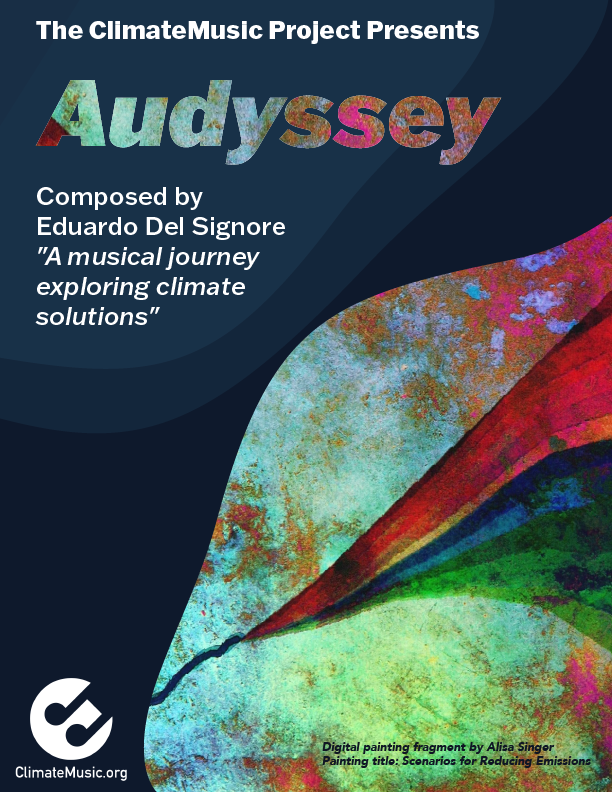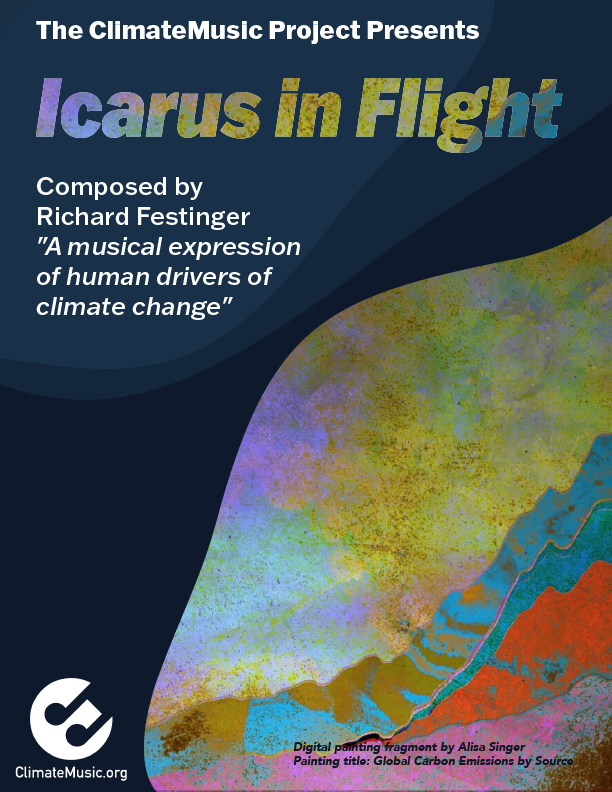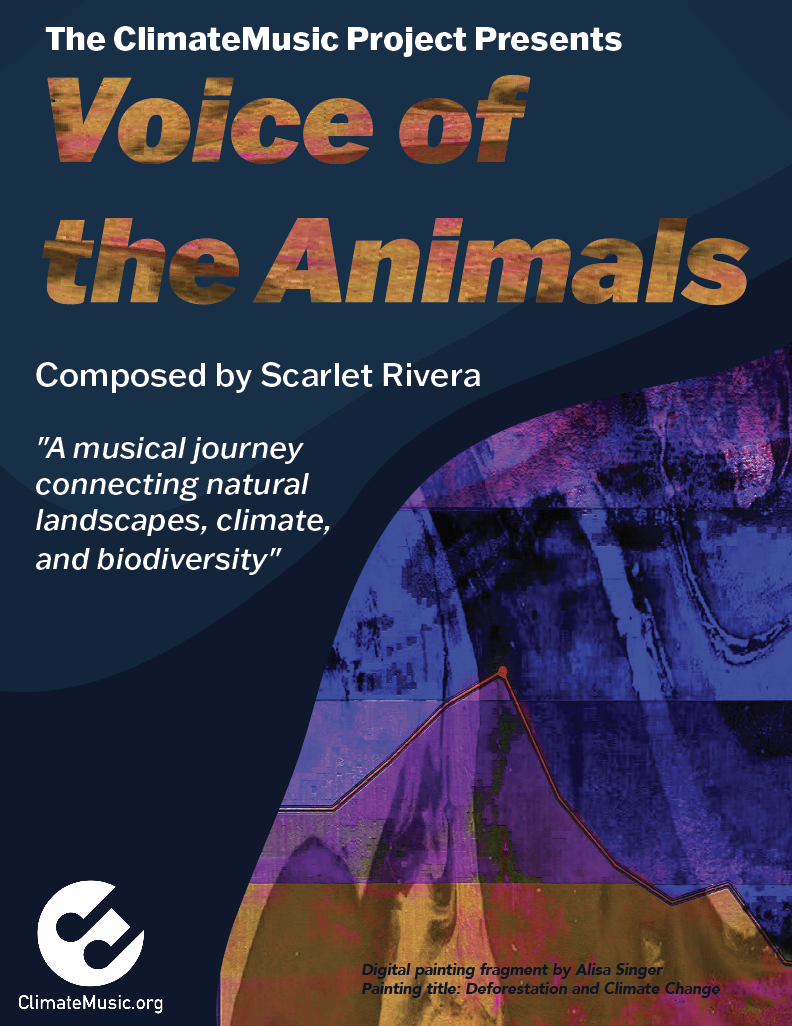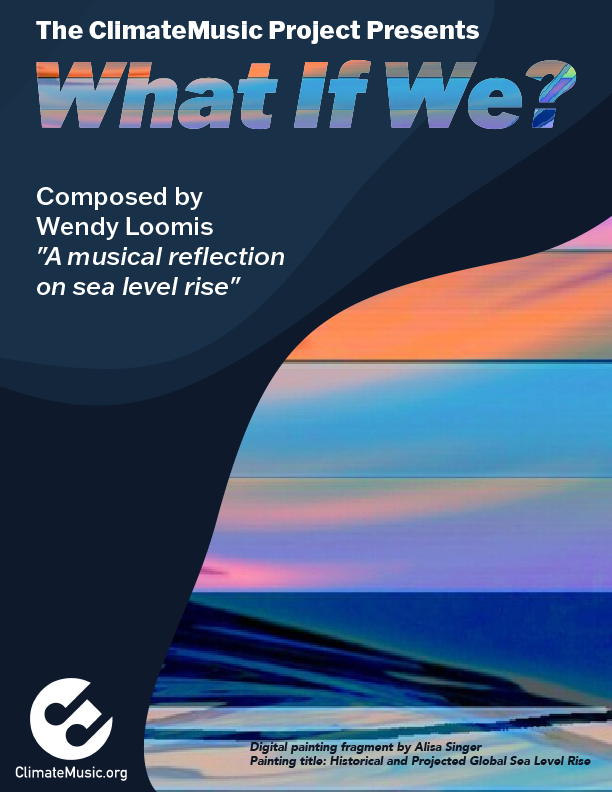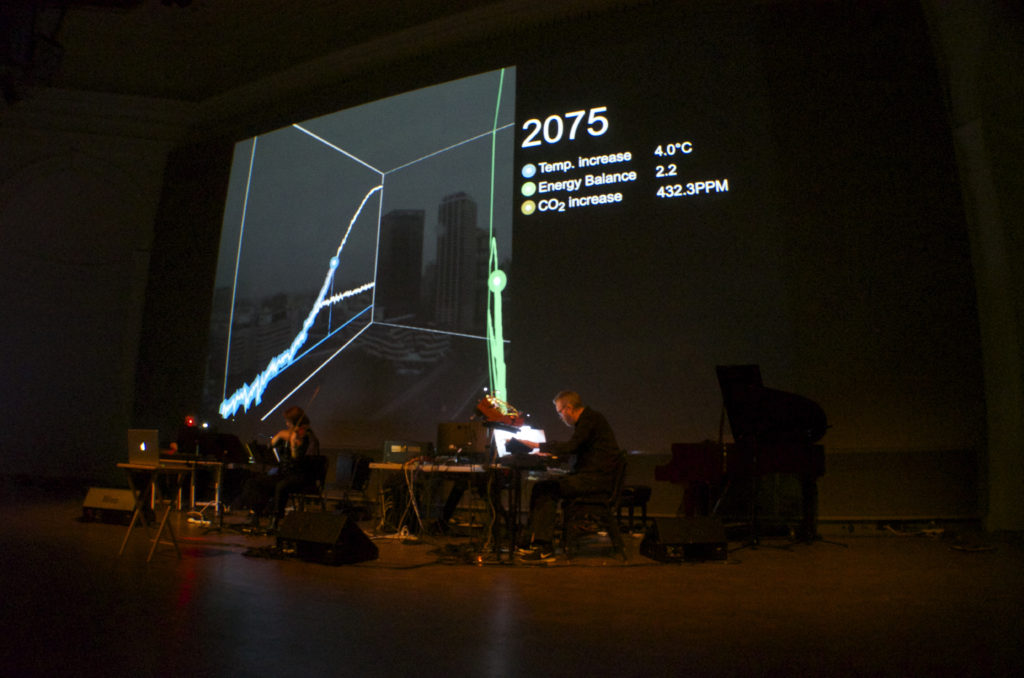Climate is an original composition by Erik Ian Walker, in collaboration with The ClimateMusic Project. It tracks historical and projected variations in the climate system over 450 years, from 1800-2250.
The music you hear in this score is not generated by the climate data (sonification), but is affected, and changed, by what the data prescribe. This collision of music (voice of humans) and data (changing nature) was a more compelling dramatic structure than sonification. Since the composition is still driven by the changes in temperature, CO2, solar energy, etc., after a certain tipping point the data takes over and becomes the generating force.
Collaborating with scientists on Climate was new and very interesting for me. There were many revisions, including completely changing the original theme a few times, due to the ‘destructive’ nature of the data, and the music becoming unrecognizable too fast. Working with inflexible data (CO2, temperature, ocean acidity, etc.) to drive a piece of music is not common. Something you like at a certain point will be “blown up” within 30 seconds! As a composer, one must “give over” their ego in this situation.
–Erik Ian Walker
Climate was made by identifying four key indicators and assigning each of these a musical analog:
– Carbon dioxide concentration is reflected in the tempo of the composition, with increasing amounts of CO2 accumulating in the atmosphere causing the tempo to speed up.
– Near Earth atmospheric temperature is represented by pitch, where a rise in temperature translates to detuning, increased dissonance, harmonic complexity and/or a simple rise in pitch.
– Earth energy balance (the balance between incoming energy from the sun and outgoing heat from the Earth) changes are audible as distortion, ring modulation (a wobbly metallic sound), volume, and a general “unhealthy” unevenness of the atmospheric tone. The greater the imbalance, the greater the distortion and loss of natural harmonics.
– Ocean pH is represented by compositional form. As the pH in the ocean drops (becomes more acidic), the compositional form degrades.
Climate follows two possible scenarios for the future. It predominantly tracks “business as usual,” in which we do little or nothing to rein in carbon emissions. This is projected to result in an approximately 9 degree Celsius rise in global temperature and catastrophic impacts by the year 2250. The second scenario (which is modeled briefly beginning in the year 2150) represents a more hopeful “2 degree” scenario under which society succeeds in reining in emissions during the first half of this century.
Coming Soon!
Action Ideas and Resources
- Learn more about what you can do with on the ClimateMusic action page.
- More action ideas and resources to come!
